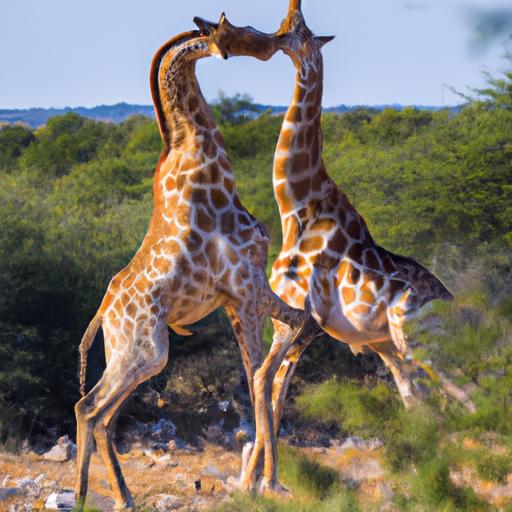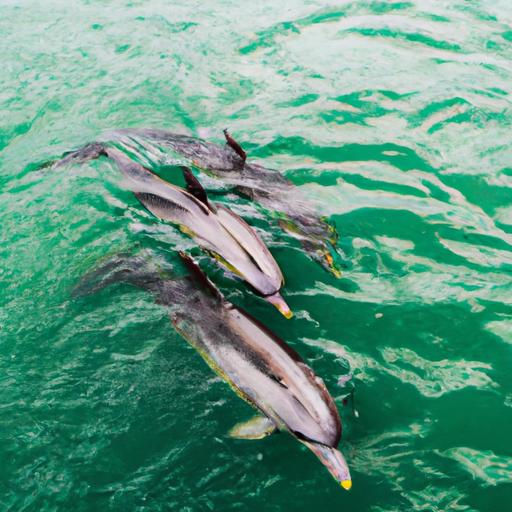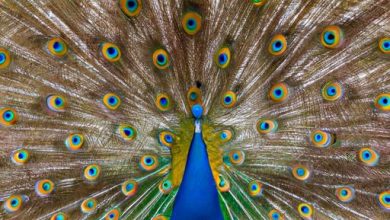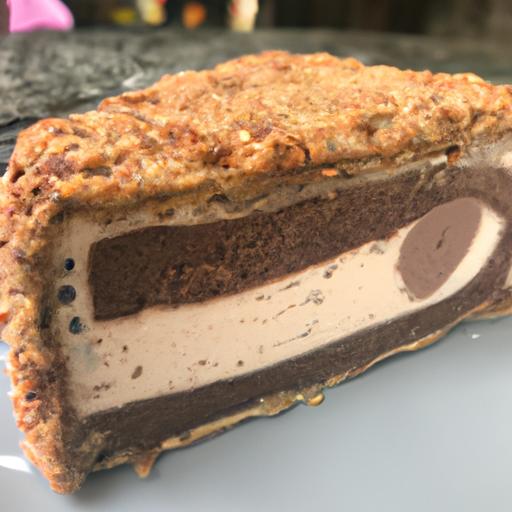Do Ants Eat Dead Human Skin? Unveiling the Fascinating Dietary Habits of Ants
Ants, those tiny creatures that scurry around tirelessly, have always piqued our curiosity with their intricate behaviors and habits. One particular question that often arises is whether ants have a taste for dead human skin. Have you ever wondered if these industrious insects could be feasting on our discarded epidermis? Let’s dive into the intriguing world of ants’ dietary habits to uncover the truth.
Understanding the feeding preferences of ants is of paramount importance. These tiny critters play a significant role in the ecosystem, contributing to the decomposition of organic matter and aiding in nutrient cycling. By studying their diet, we gain valuable insights into their ecological impact and the intricate web of interactions within nature.
Now, let’s address the burning question: do ants truly consume dead human skin? To find the answer, we need to explore the scientific research and delve into the fascinating world of ants. So, join me on this enthralling journey as we unravel the truth behind ants’ potential consumption of dead human skin.
Stay tuned for the next section, where we will provide an overview of ants’ feeding habits and the various food sources they rely on. Prepare to be amazed by the diverse range of sustenance that these tiny creatures seek out in their quest for survival.
Ants’ Diet: Overview
Ants, with their astounding diversity, have evolved to thrive in various ecosystems across the globe. To understand their dietary habits, we need to explore the general patterns that govern their feeding behaviors. Let’s take a closer look at the fascinating world of ants’ diets.
General Information about Ants’ Feeding Habits
Ants are omnivorous creatures, meaning they have a versatile appetite that encompasses both plant and animal matter. While their specific dietary preferences may vary depending on the species and ecosystem they inhabit, the majority of ants exhibit a wide range of feeding behaviors.
These diligent insects are known to forage tirelessly in search of sustenance. They employ a combination of chemical cues and visual cues to locate potential food sources. Once a food item is discovered, ants communicate its presence to the rest of the colony through intricate chemical trails, allowing for efficient exploitation of resources.
Various Food Sources for Ants
Ants have adapted to exploit a variety of food sources found in their surroundings. Some ants primarily rely on carbohydrates, such as nectar and honeydew produced by aphids and other sap-sucking insects. These sugar-rich substances provide the necessary energy for their daily activities.
On the other hand, certain ant species are carnivorous, preying on small invertebrates like insects, spiders, and even other ants. This predatory behavior ensures a protein-rich diet essential for growth and reproduction.
Additionally, ants are known to scavenge on decaying organic matter, contributing to the decomposition process. They play a vital role in recycling nutrients back into the ecosystem, making them crucial contributors to ecological balance.
In the next section, we will explore whether ants have the capability to consume dead human skin. Brace yourself for an intriguing investigation into this peculiar aspect of ants’ dietary habits.
Ants’ Feeding Preferences
1. Ants’ Preference for Certain Food Types
Ants exhibit a remarkable ability to adapt their diets based on the availability of food sources in their environment. While they are primarily recognized as scavengers, ants also engage in predation and have been known to cultivate certain food sources. But what exactly do ants prefer to devour?
These resourceful insects have a diverse palate, relishing a wide range of food types. From sweet nectar and honeydew to protein-rich sources like insects and seeds, ants display a remarkable flexibility in their feeding preferences. Some species even exhibit a preference for specific types of food, such as the carpenter ant’s fondness for sugary substances or the leafcutter ant’s affinity for fresh foliage.
2. Factors Influencing Ants’ Dietary Choices
Several factors influence ants’ dietary choices, helping them adapt to their surroundings and optimize their foraging efforts. Here are some key factors that shape ants’ feeding preferences:
a. Nutritional Requirements
Just like any other living organism, ants have specific nutritional needs. They seek out food sources that provide the necessary nutrients for their growth, reproduction, and overall well-being. Different ant species have varied dietary requirements, which influence their food preferences.
b. Environmental Factors
Ants are highly adaptable creatures, and their feeding preferences are influenced by the surrounding environment. Factors such as temperature, humidity, and the availability of food sources play a crucial role in determining what ants choose to eat. They adjust their diets accordingly to make the most of the resources available to them.
c. Colony Needs
Ants are social insects that live in colonies, where the collective well-being takes precedence. The dietary preferences of ants are often driven by the needs of their colony. For example, worker ants may prioritize gathering protein-rich food to nourish the growing brood, while other individuals focus on sourcing carbohydrates to sustain the energy demands of the colony.
In the next section, we will explore the intriguing question of whether ants consume dead human skin. Join me as we uncover the scientific findings and unravel the mysteries surrounding ants’ potential dietary habits.
Do Ants Consume Dead Human Skin?
Exploring the Potential Appetite of Ants for Dead Human Skin
When it comes to ants’ dietary choices, it is natural to wonder if these tiny creatures have a peculiar taste for dead human skin. However, the scientific community has conducted extensive research to shed light on this intriguing question.
Numerous studies have been undertaken to investigate ants’ consumption habits, including their potential appetite for dead human skin. Researchers have observed these industrious insects in various settings, examining their foraging behaviors and food preferences. Surprisingly, while ants are known to be opportunistic feeders, there is limited evidence to suggest that they actively seek out and consume dead human skin.
Although ants possess impressive capabilities to dismantle and consume a wide range of organic matter, the consumption of dead human skin remains a topic of debate. While some species of ants may scavenge on decaying flesh, they typically target smaller, more easily accessible food sources.
Scientific Research and Findings on Ants’ Consumption Habits
Scientific studies have focused on exploring ants’ dietary preferences and their ability to consume different types of food. These investigations have revealed that ants display varying degrees of selectivity when it comes to their diet. They often prioritize readily available food sources, such as sugary substances, proteins, and carbohydrates.
While there is no definitive evidence to support the claim that ants actively seek out dead human skin, it is essential to acknowledge the remarkable adaptability and resourcefulness of these insects. Their ability to thrive in diverse environments and adapt to changing conditions allows them to exploit various food sources effectively.
In the next section, we will delve into potential reasons that may explain ants’ attraction to dead human skin. Join me as we explore the ecological and evolutionary perspectives that shed light on this intriguing phenomenon.
Potential Reasons for Ants Consuming Dead Human Skin
Exploring the Attraction: Possible Explanations for Ants’ Consumption
As we delve deeper into the mysterious world of ants, we encounter a fascinating question: why would ants be attracted to dead human skin? While research on this specific topic is limited, there are several potential explanations that shed light on this intriguing phenomenon.
1. Nutritional Value: Seeking Essential Nutrients
Ants are resourceful creatures, constantly on the hunt for food sources that provide them with the necessary nutrients to survive. Dead human skin, though seemingly unappetizing to us, contains valuable proteins and other organic compounds that ants may find beneficial. It is possible that ants have evolved to recognize and exploit these nutrient-rich resources, utilizing them to fuel their own growth and development.
2. Chemical Signatures: Following Scent Trails
Ants are known for their exceptional sense of smell and their ability to communicate through chemical signals. Dead human skin emits a unique combination of chemical compounds, including fatty acids and other odorous substances. It is plausible that ants are attracted to the distinct scent of dead human skin, following scent trails left behind by decomposing tissues. By harnessing their chemical communication abilities, ants may navigate their way to a potential food source.
Ecological and Evolutionary Perspectives: Unraveling the Intricate Web
To truly understand ants’ consumption of dead human skin, we must consider the ecological and evolutionary context. Ants play a vital role in the ecosystem, serving as decomposers that aid in breaking down organic matter. Dead human skin, being a part of this organic matter, becomes a potential food source for ants in their natural environment.
From an evolutionary standpoint, ants have adapted and specialized over millions of years to exploit various food sources available to them. This adaptability has allowed them to thrive in diverse habitats worldwide. It is possible that ants have developed mechanisms to take advantage of the nutrients present in dead human skin as part of their survival strategy.
In the next section, we will conclude our exploration of ants’ consumption habits and summarize the key findings. Join me as we wrap up this captivating journey into the world of ants and their dietary preferences.
Conclusion: Unveiling the Secrets of Ants’ Dietary Habits
In conclusion, delving into the dietary habits of ants has allowed us to gain a deeper understanding of their role in the ecosystem. While ants are known for their diverse food preferences, the notion of ants consuming dead human skin remains intriguing. Through scientific research, we have explored the possibility of ants feasting on this unusual food source.
Although there is no concrete evidence to suggest that ants specifically target dead human skin, it is crucial to acknowledge the vast array of resources ants rely on for sustenance. These resourceful insects have adapted to thrive in various environments, seeking out different food sources to meet their nutritional needs.
The curiosity surrounding ants’ consumption of dead human skin highlights the intricate relationships between organisms in the natural world. It reminds us of the complex web of interactions that exist, where every organism plays a crucial role in maintaining the delicate balance of ecosystems.
As we continue to unravel the mysteries of nature, it is essential to approach these questions with a scientific mindset and an appreciation for the wonders of the natural world. Ants, with their remarkable foraging abilities and diverse dietary choices, continue to captivate our imagination.
Thank you for joining me on this captivating journey into the world of ants’ dietary habits. Remember, the wonders of nature extend far beyond what meets the eye. Stay curious, and let the world of ants inspire you to explore the fascinating intricacies of the natural world.
vegetable.kenhtech.com
Conclusion: So above is the Do Ants Eat Dead Human Skin? Unveiling the Fascinating Dietary Habits of Ants article. Hopefully with this article you can help you in life, always follow and read our good articles on the website: vegetable.kenhtech.com



